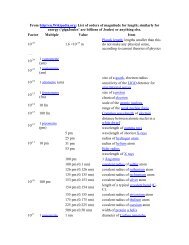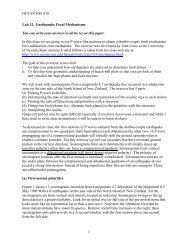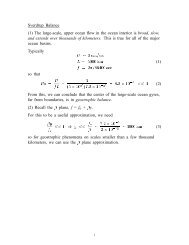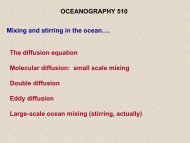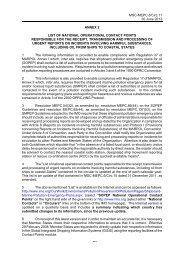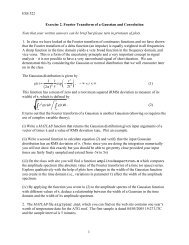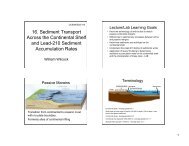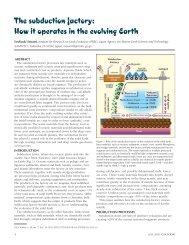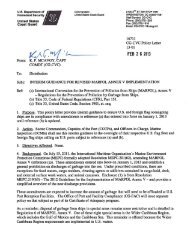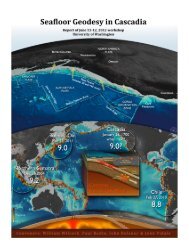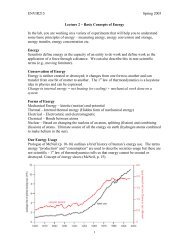LOWER ZAMBEZI RIVER BASIN BASELINE DATA ON LANDUSE ...
LOWER ZAMBEZI RIVER BASIN BASELINE DATA ON LANDUSE ...
LOWER ZAMBEZI RIVER BASIN BASELINE DATA ON LANDUSE ...
Create successful ePaper yourself
Turn your PDF publications into a flip-book with our unique Google optimized e-Paper software.
critical to the assessment of water availability for agriculture, under different landuse and climatescenarios.4.10. TRAINING OF GPZ AND ARA <strong>ZAMBEZI</strong> STAFF <strong>ON</strong> THE <strong>DATA</strong>ACQUISITI<strong>ON</strong> AND MODELLING APPROACHES84. Activities addressing data acquisition and modelling approaches for regional staff wereinitiated, primarily with Dinis Juizo (Eduardo Mondlane University) and Jose Chemba(AraZambezi, now World Bank). Mr. Juizo has been active in data acquisition, and has begunthe process of downloading the VIC model code.4.11. <strong>ZAMBEZI</strong> DYNAMIC INFORMATI<strong>ON</strong> FRAMEWORK (ZambeziDIF)85. The database and models that are being developed in the ZambeziDIF in support of thisSLM baseline study are extensive, and represent information not previously available inMozambique. Much of the information is represented as geospatial data layers, in ArcGIS rasterformat (which can be converted to other geospatial formats, including GridASCII suitable for awide range of industry standard GIS applications). To facilitate initial access to this information,the ZambeziDIF represents constructed data layers through ArcIMS (Arc Internet Map Server).The user does not need to have specialized GIS or visualization software available. ArcIMSessentially provides a user with access to the data layers; including being able to query andexamine the data, as if the user has GIS software.86. ZambeziDIF Version 1 can be accessed at:http://www.riversystems.washington.edu/zambezi_dif (it is expected to migrate to hosts inMozambique at the earliest opportunity). Categories of information include (Fig. 4.24):Physical templateZambezi Basin Boundaries: Basin boundary (the mask of the Zambezi basin), politicalboundaries, lakes and rivers (from several sources), DEM derived from SRTM, and a series ofLandsat tiles for 1990 and 2000 (as composites only; not processed)Soil Properties: The hydrologic properties required by VIC, including soil density, bulk density,Ksat, DSmax and PCP.Vegetation and LanduseSouthern Africa MODIS Landcover: MODIS-derived land cover products at 1km and 8 km forSouthern Africa, as the overall coverage of the regionLandcover and Landuse: MODIS 1-km landcover, and the Landsat TM5 and ETM productsdescribed in Section 2.VIC Landcover 8 km: The percent landcover in each pixel, for each of the classes (cropland,savanna, etc) utilized by VIC, derived from the MODIS 1 km data.Surface Climate Inputs and Model-Computed Hydrology (based on the ECMWF ERA-40 data):This set includes the surface climate forcing variables required by VIC (temperature,precipitation, wind) and model output products (runoff, evaporation, and soil moisture). Timeperiods include the mean annual over the period 1997-2002, and February 2000 and 2001.40



